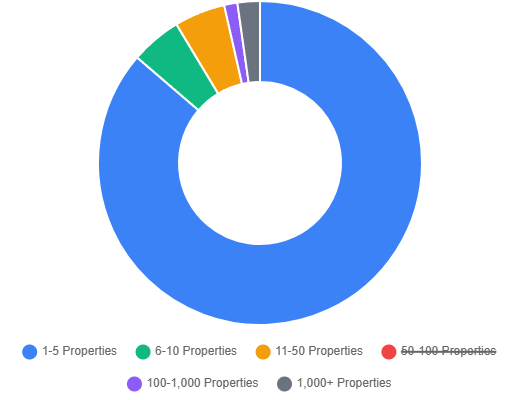Q1 2025 Report
Investor Market Share Soars as Traditional Buyers Retreat
26.8%
Market Share
265,000
Homes Purchased



150M+
U.S. Properties

1000+
Data Points

20,000+
BatchService Users

2021
Founded
About BatchData
Founded in 2021, BatchData is a comprehensive real estate data platform providing enterprise-grade APIs with access to 1000+ data points for over 150 million U.S. properties. Serving businesses from startups to Fortune 500 companies, BatchData delivers robust lead generation, AI predictive data, skip tracing, data enrichment, and seamless integrations with real-time updates and industry-leading accuracy.
Unlike static data aggregators, BatchData’s in-house data science team enriches datasets from multiple tier-one providers while leveraging real-time feedback from over 20,000 BatchService users to maintain the highest data quality standards in the industry.
This report is presented in conjunction with CJ Patrick Company.
Key Market Insights
Critical data points that define the current investor landscape in residential real estate – highest market share in at least five years

26.8%
Record Market Share
↑ 8.3% from 2020-2023 average

90%
Small Investor Control
1-10 properties per investor

39.9%
Hawaii Leadership
Tourism-driven market

$366,424
Avg. Purchase Price
Below market average

Market Share Surge Driven by Buyer Retreat
Market Contraction Effect
Overall home sales collapsed 30% from their 2021 peak of 6.9 million to just 4.8 million in 2023, creating a vacuum that investors increasingly filled.
Stable Investor Volume
Investor purchases remained relatively stable—growing only 9% from 1.1M annually to 1.2M in 2024.
Primary Liquidity Providers
Investors are currently one of the market's primary liquidity providers as traditional buyers struggle with affordability constraints.
The Smallest Investors Dominate Despite Institutional Headlines
Small investors control 90% of investor-owned housing, shattering conventional wisdom about institutional dominance.


Key Finding
The 15.6 million properties owned by investors holding 1-5 homes represent 85% of all investor inventory, while those with 6-10 properties add another 5%, bringing small investor control to 90% of the market.
Market Implication
This concentration pattern reflects accessibility rather than consolidation. Small investors benefit from lower capital requirements, local market knowledge, and operational flexibility that institutional players have difficulty replicating at scale.
Investor Property Ownership by Portfolio Size
| Portfolio Size | Properties Owned | Market Share | Trend |
| 1-5 Properties | 15,644,919 | 85% | ↑ Growing |
| 6-10 Properties | 905,881 | 5% | → Stable |
| 11-50 Properties | 1,001,207 | 5% | ↑ Growing |
| 50-100 Properties | 200,134 | 1.1% | → Flat |
| 100-1,000 Properties | 247,220 | 1.3% | ↓ Declining |
| 1,000+ Properties | 405,154 | 2.2% | ↓ Retreating |
Geographic Strategies Drive Concentration
While the largest states have the highest number of investor-owned homes, three distinct investment strategies drive the highest concentrations of investor ownership in other parts of the nation.
Tourism & Vacation Rentals
Hawaii
39.9%
Alaska
35.5%
Cash Flow & Affordability
Arkansas
30.0%
West Virginia
30.0%
Lifestyle & Migration
Vermont
30.0%
Wyoming
30.0%
Investor Ownership by State

Highest Investor Concentration
Hawaii
39.9%
Alaska
35.5%
Arkansas
30%
West Virginia
30%
Investment Strategy Insights
Tourism Markets
Hawaii's 30,000 short-term vacation rentals represent 5% of total housing inventory, capitalizing on millions of annual visitors.
Affordability Markets
Arkansas offers properties with average rents of $1,093 and landlord-friendly laws. West Virginia delivers the nation's most affordable housing at $112,902 median values with $3.2 billion in infrastructure investments through 2026.
Migration Markets
Vermont saw a 6.9% increase in farm numbers between 2012-2017, driven by urban-to-rural migration trends.
Regional Investment Patterns
Three states dominate investor ownership, accounting for nearly 25% of all investor homes nationwide
Leading States by Investor Properties
1
Texas
1.66M
Massive post-COVID migration
2
California
1.45M
Most populous state (40M+ residents)
3
Florida
1.21M
Major destination for interstate migration
Three Distinct Investment Strategies
Investor concentration follows clear economic fundamentals across different market types
Growth Markets
Demographic Shifts
Market Fundamentals
Key Insight
Rather than random distribution, investor concentration follows clear economic fundamentals. Population growth, demographic shifts, and strong market fundamentals drive the highest concentrations of investor ownership across the nation.
Large Investors Execute Strategic Retreat
Mega-investors appear to be executing a coordinated retreat from single-family markets, selling 76% more properties than they purchased in Q1 2025.


4,200
Properties Sold
2,400
Properties Bought
Pricing Strategies Reveal Market Segmentation
$366,424
Average Investor Price
Below market average
$503,800
Market Average Price
All home sales
$262,064
Large Investor Avg
Focus on Midwest & South
Key Takeaways
Critical insights that define the future of investor participation in residential real estate
$366,424
Small Investor Control
Geographic Strategy
Institutional Retreat
Pricing Discipline
Structural Change
Get the Complete Analysis
Access detailed methodologies, additional data points, and strategic recommendations for your investment decisions.
- Quarterly trend analysis and forecasting
- Market-specific investment strategies
- Detailed demographic and pricing data
- Executive summary and policy implications